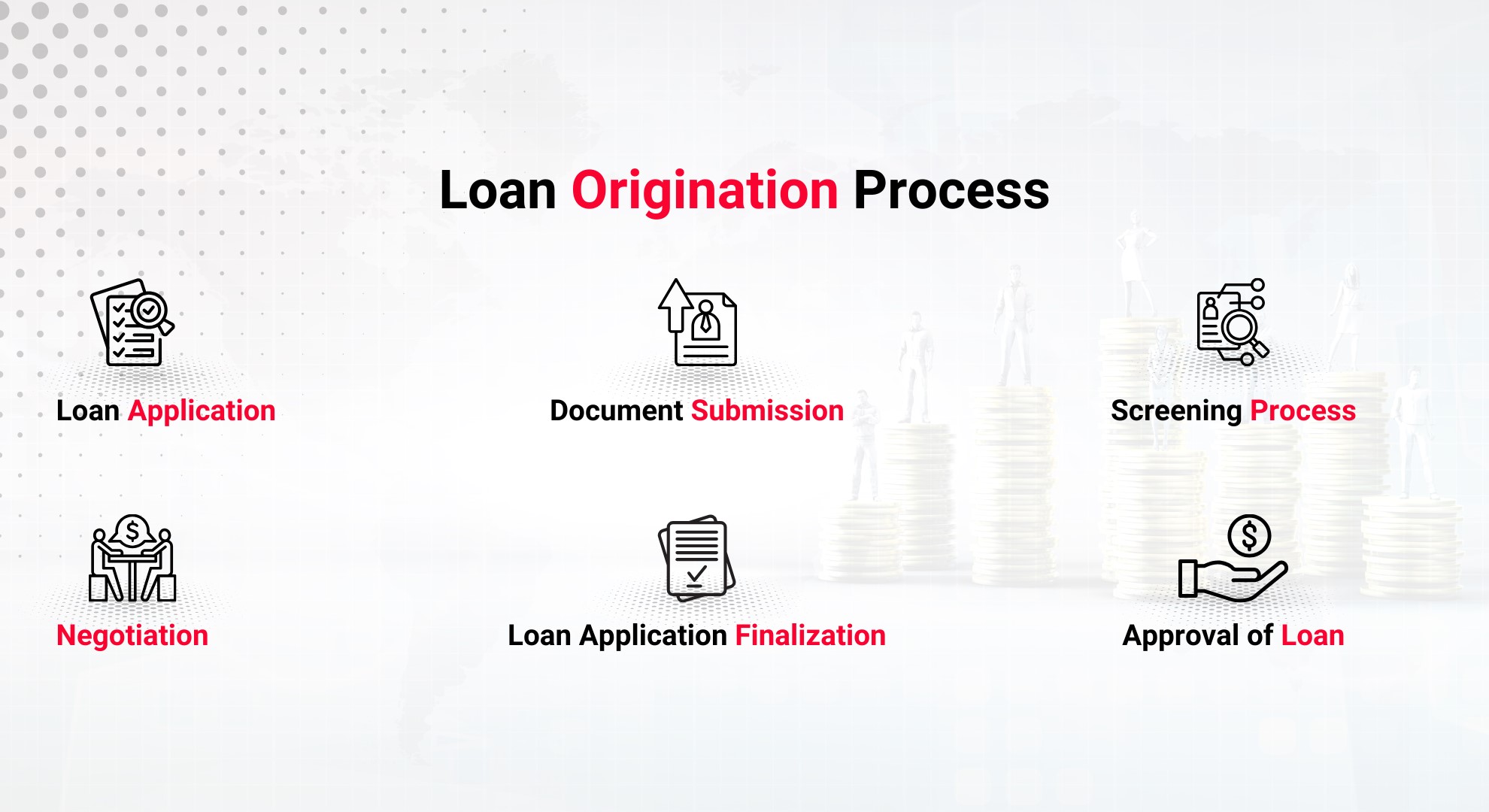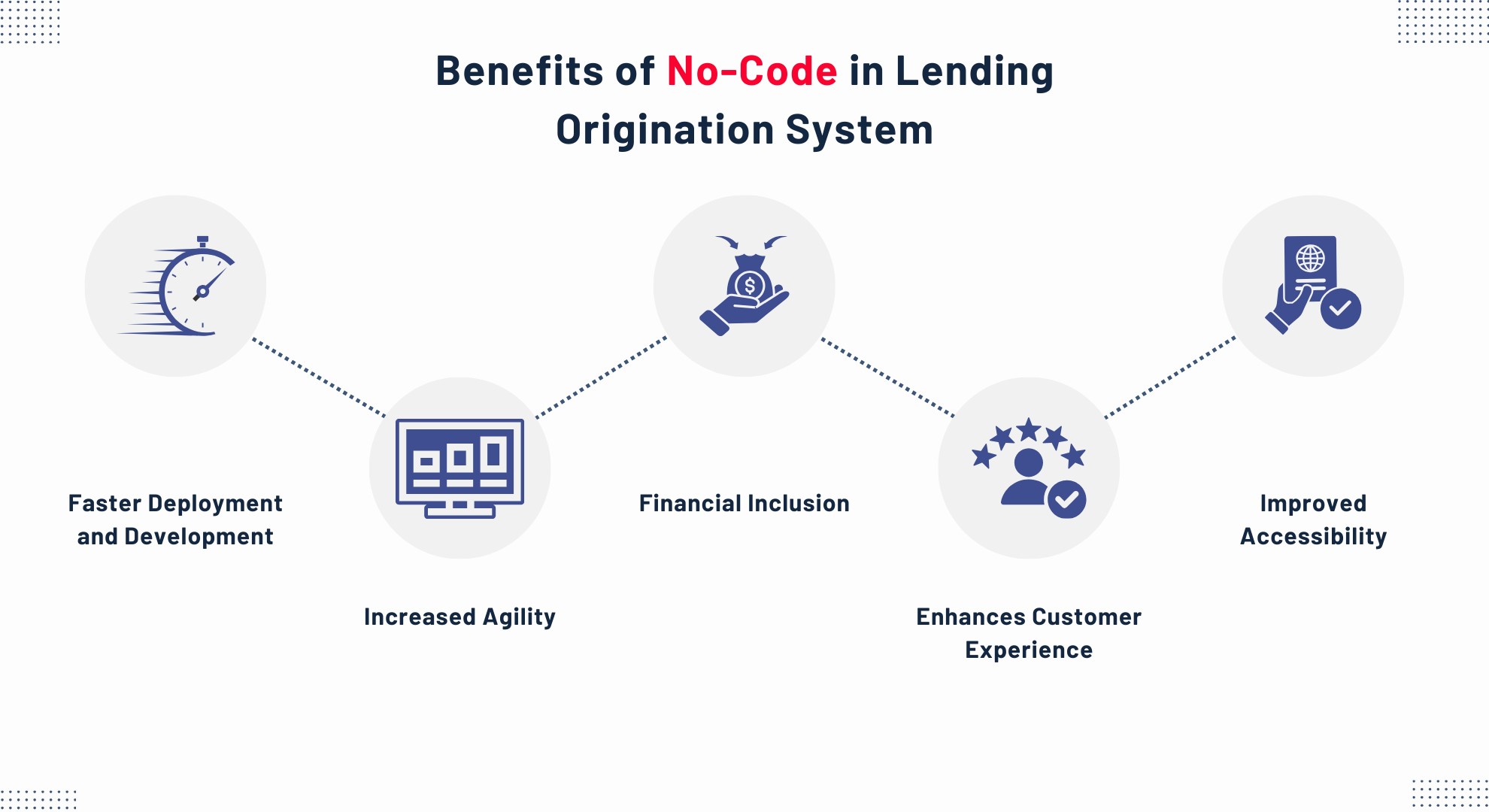Traditional loan origination meant tons of paperwork, delays, and a lack of transparency. However, the lending origination system (LOS) and the rise of no-code platforms are ushering in a new era of the BFSI (Banking, Financial, and Insurance sector.
Table of Contents
ToggleIn this blog, we will take you through how the lending origination system is being revolutionized. Furthermore, we will also see how no-code platforms further empower this by enabling faster development and increased agility, ultimately creating a borrower-centric lending landscape.
Digitization has provided a foundation for an efficient and borrower-centric lending system, revolutionizing the fintech landscape. Fintech companies are leveraging these digital tools to design user-friendly applications that are adaptable to the changing market demands and offer flexible loan options.
The synergy between fintech and digitization is a win-win situation for the LOS, since it reduces operational costs, and helps compete more effectively in a changing market. But where do no-code platforms fit into this equation? No-code platforms tie the two, digitization and fintech, to reach new customer segments. But before that, let’s learn about the lending origination system.
Lending Origination System
We will take a scenario to illustrate how it works. Imagine you want to apply for a business loan. What do you think the process might look like?
In the first step, you will visit the bank to fill out those lengthy paper applications, providing all your personal information. Following this, an officer will manually review the application, verify it, and request additional documents.
The last step would involve waiting for updates and approval at each stage. Moreover, this could take weeks. LOS streamlines the whole process, making it easier for you for the loan approval process.
How the Lending Origination System Works

Leveraging LOS means that you sit at home and complete the online application through the bank’s website. The LOS guides you through the process, ensuring all required information is collected.
Now it integrates with other databases to verify your identity and financial data. It also uses pre-defined rules and algorithms to assess your creditworthiness and generate an eligibility score. The LOS now assigns your application to a loan officer and keeps track of the progress.
With all the information readily available, the loan officer can make a quicker decision on her application. Don’t worry. The LOS facilitates secure communication between the two parties. Conversely, you receive updates and track your application status. This simply outlines the basic functioning of LOS.
The lending origination system has improved the lending experience in several ways.
- This leads to a faster and more efficient loan application process for both the borrower and the lender.
- LOS integrates with various databases to verify information and utilizes pre-defined rules to assess creditworthiness.
- It automates tasks, reduces manual errors, and provides real-time data.
- LOS can be customized to handle different loan types and borrower profiles, allowing lenders to offer a wide range of loan options.
As per allied market research, the global loan origination market is projected at a CAGR of 10.2% from 2023 to 2032.
How No-Code Play a Role in LOS?

The no-code platforms will be a game changer and have the potential to play a significant role in the future of the loan origination system. Let’s look at some of its benefits.
Faster Development and Deployment
Compared to traditional coding methods, no-code platforms allow you to develop and deploy applications in less time. This is crucial for institutions that want to quickly adapt to changing market demands or even launch a new product rapidly.
Furthermore, it becomes easy to iterate and make changes as you go along the process.
Increased Agility
No-code tools empower business users and loan officers to participate in customizing workflows and processes. No-code platforms are visually driven and use a drag-and-drop interface that enables non-technical and technical users to build applications.
This fosters agility and allows institutions to tailor the system to specific needs without relying on IT teams.
Financial Inclusion
As we discussed, no-code ties digitization and the financial landscape. It offers a promising approach to making financial services more accessible and inclusive.
By using no-code tools, you can build apps that seamlessly integrate with the LOS. This allows lenders to reach borrowers in underserved communities who primarily use mobile devices to access financial services and information.
Improved Customer Experience
Building intuitive and easy-to-navigate application interfaces becomes a piece of cake with no-code platforms. This translates to a smoother application process for borrowers, minimizing frustration and errors.
You can build mobile-friendly loan applications that cater to borrowers who primarily use mobile devices for financial tasks, enhancing customer experience.
Improved Accessibility
LOS functionalities can become more accessible using no-code platforms to smaller financial institutions or fintech startups who might not resources to invest in complex, custom-built solutions.
This fosters a more competitive lending landscape, offering borrowers a wider range of options.
Conclusion
The traditional lending origination system was an obstacle course of paperwork, delays, and frustration for both borrowers and lenders. For this reason, the LOS has emerged as a game-changer, streamlining the process and ushering in a new era for the BFSI sector.
LOS coupled with the no-code platforms, empowers institutions to offer a borrower-centric experience with features like faster development, increased agility, enhanced customer experience, etc.
Embracing LOS and no-code solutions will help BFSI to create a more efficient, transparent, and borrower-centric lending landscape.
FAQs
- How does a Loan Origination System (LOS) make the loan application process faster?
Traditional loan applications involve a lot of paperwork and manual processing. LOS automates tasks like data collection, verification, and document handling. This reduces processing times significantly, allowing you to complete your application online and receive updates much quicker.
- What are the benefits of using a LOS for borrowers?
LOS benefits borrowers in several ways. It offers a more streamlined and user-friendly application process. Additionally, it facilitates faster decisions by the lender due to real-time data and automated creditworthiness checks. Borrowers also gain improved transparency with the ability to track the progress of their applications.
- How do no-code platforms play a role in the Loan Origination System?
No-code platforms allow institutions to develop and customize LOS functionalities without extensive coding. This translates to faster development of new loan products, and increased agility in adapting to build mobile-friendly applications for a smoother borrower experience.
